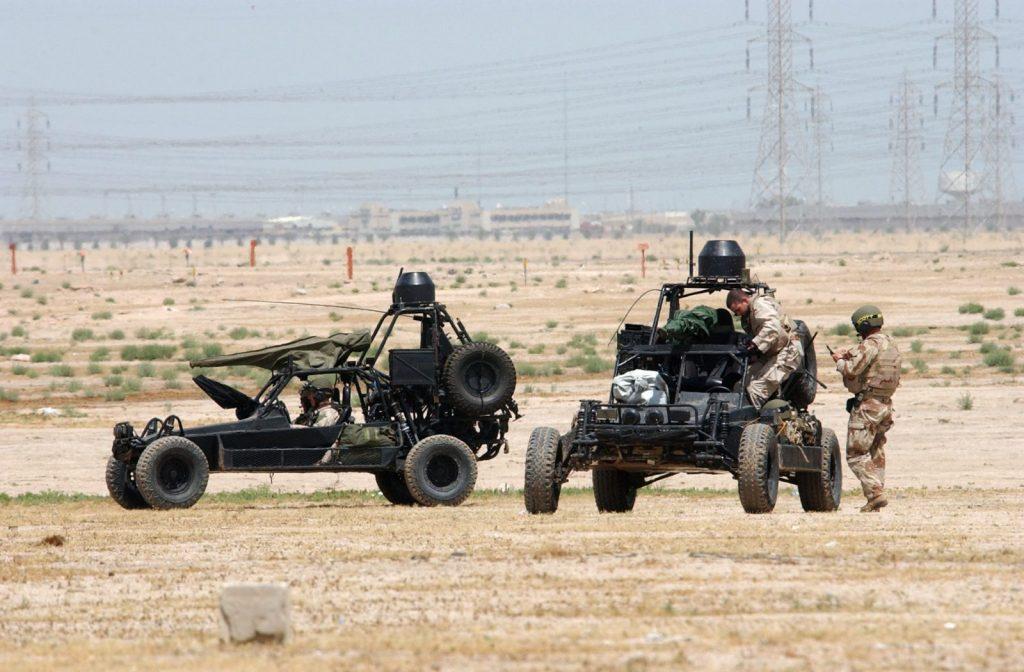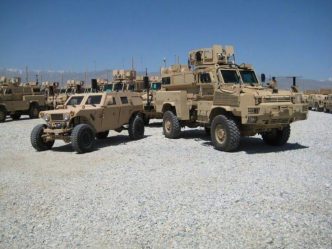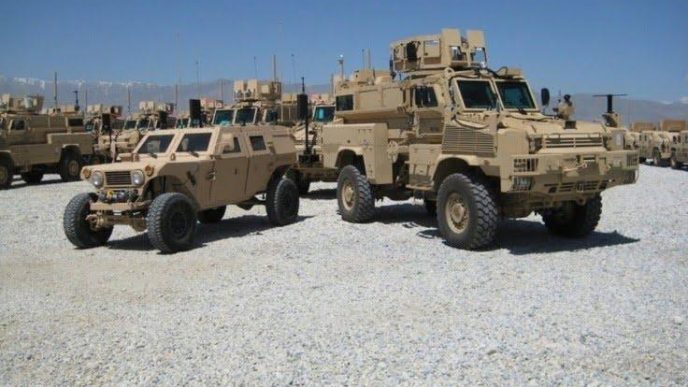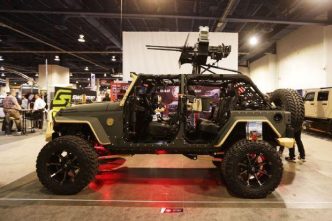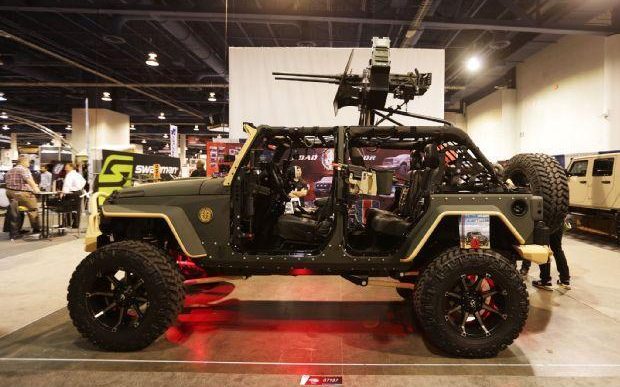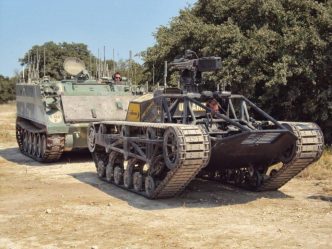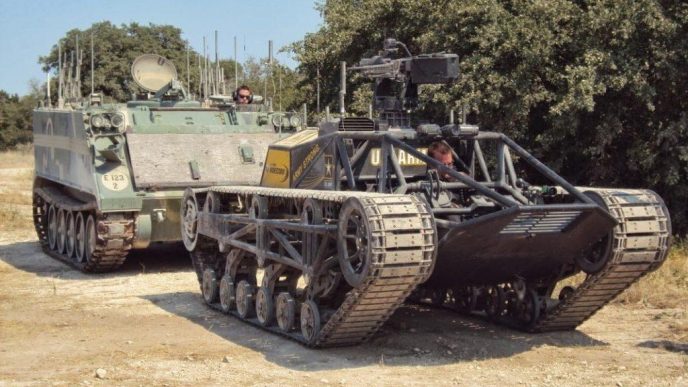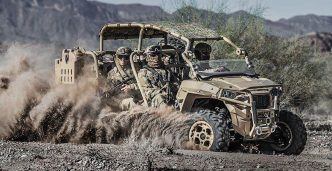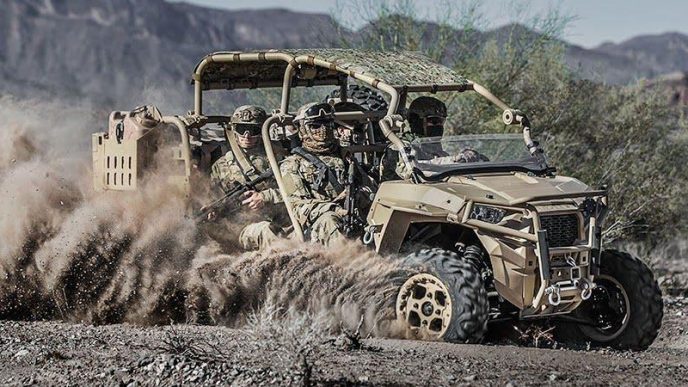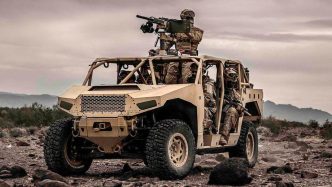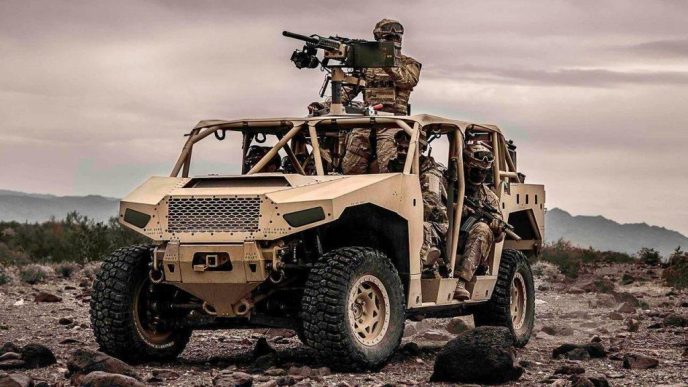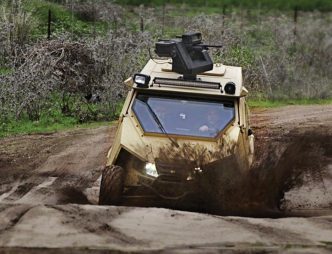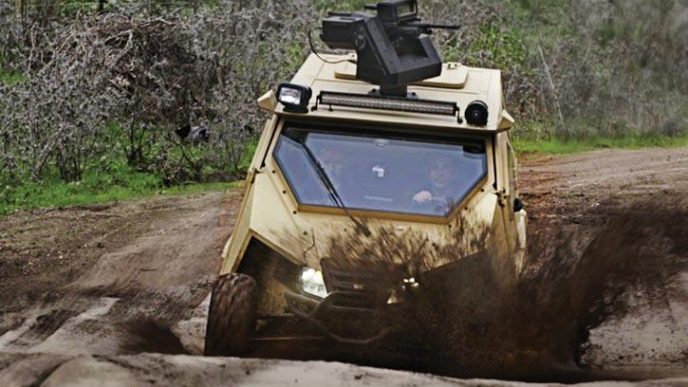The Desert Patrol Vehicle, also known as DPV, is a high-speed, lightly-armored sandrail-like vehicle first used in combat during the Gulf War in 1991. The earlier versions were known as formerly called the Fast Attack Vehicle or just FAV. Due to their dash speed and off-road mobility, the Desert Patrol Vehicles were used extensively during Operation Desert Storm. The first US forces to enter Kuwait City were United States Navy SEALs in their DPVs. The Desert Patrol Vehicle is currently operated only by SEAL teams assigned to the Middle East (earlier it was SEAL Team Three).
The original tests and preparations for such vehicle used commercial dune buggies modified to carry weapons such as TOW missiles and recoilless rifles. The problem with the recoilless rifles was about recoil because it still had enough power to flip the lightweight dune buggies and this idea was abandoned.
The TOW missiles had much greater success, but they violated existing Army TOW doctrine. The US Army had determined that a TOW missile needed a 3 man team to operate it. The Desert Patrol Vehicles could only carry a two-man crew and they seemed perfectly capable of operating the TOW, but this would have meant revisiting Army doctrine and possibly changing TOW deployment throughout the US Army. Fort Benning decided to offer a “superior” Desert Patrol Vehicle design that allowed a third crewman. This design was rejected by the HTLD team and was never produced.
The DPV is a variant of the Fast Attack Vehicle, which was developed during the 1980s as part of the United States Army’s High Technology Light Division (9th Infantry Division). The HTLD was given carte blanche to develop doctrine, decide force structure, and design equipment by then Army Chief of Staff Edward C. Meyer. One of the pieces of equipment created was the Fast Attack Vehicle. Chenowth delivered 120 Fast Attack Vehicles to the US Army in 1982. HTTB (High Technology Test Bed) in the units in the 9th Infantry were first to deploy these vehicles. Along with light off-road motorcycles, the FAV was intended to provide a highly mobile component to the mostly foot infantry unit.
Eventually, the Fast Attack Vehicles were replaced by High Mobility Multipurpose Wheeled Vehicles (HMMWVs) in general military use, which did not provide nearly the speed nor extreme off-road capabilities of the FAVs. FAVs were transferred to special forces use where it has been largely replaced by the Light Strike Vehicle.

The basic weapons on a Desert Patrol Vehicle consist of a heavy .50 caliber M2 Browning machine gun, two lighter 7.62×51 mm M60 machine guns, and two M136 AT4 anti-armor weapons. In some cases, the driver’s M60 or the gunner’s M2 is replaced with a 40 mm Mk 19 grenade launcher. Other light machine guns such as the M240 machine gun or 5.56×45 mm M249 SAW can also be mounted, also as many other types of weapons.
These special purpose vehicles intended for special operations forces were recognized as exotic vehicles and were featured in many Hollywood movies through years.
